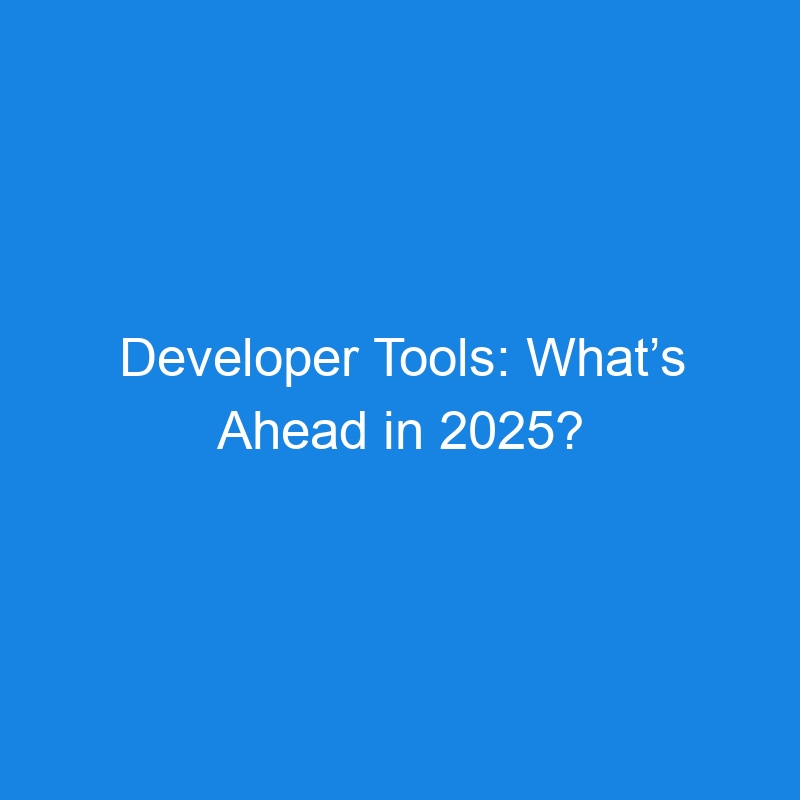
As a revolution approaches, the first visible change is a change of attitude.
Developer tools aren’t usually an area where rapid revolutionary change occurs. But adding large language models (LLMs) to the toolchain is upending everything. The question is whether the changes offered by LLMs really align with the change people actually want. Here are the trends I see emerging for dev tools in 2025:
LLMs and Generative AI
We are beginning to realize not only that the big LLM vendors train their models on data they don’t own, but cloud-based AI gets to see a lot of private information that they can also benefit from.
In the same way that Google knows what everyone is searching for because we tell them, LLM vendors want your queries to start on their clouds, and for that reason alone development will remain fast but narrow.
Solutions where business queries don’t get sent straight to Sam Altman will obviously continue, but always at a step behind everything else. I can immediately see that solutions like CodeGate, that try to place a firewall between your AI workflow and the vendor, both underline as well as possibly mitigate the problem. Of course, a company considers its local secrets (passwords, etc.) to be sensitive, but all sorts of information exhaust is sensitive beyond that.
Once people get a taste for thinking about and limiting what their queries are clearly telling vendors, they might become more conservative with the way they use hosted LLMs. This will be a continuing standoff in the next year.
Right now agentic systems probably just represent a chain of not entirely reliable queries, and multiplied together, small errors can make the end-to-end query unusable. In a future environment where tasks are known, simplified and will succeed with high precision, agentic systems will prosper. But not this year.
If you learned how to windsurf, you may remember the problem of not learning how to tack against wind and tide, which meant that all beginner windsurfers end up blown to the same part of the beach. An increasing number of accidental developers will find themselves beached because they made good headway with LLM assistance that exceeded their understanding — then got stuck.
This is possibly a teaching opportunity, and I expect some of the dojo-style teaching sites to pivot toward those becalmed windsurfers and persuade them to go back and learn some development fundamentals.
Generative AI, especially art assets, will continue to improve in quality and will be a scourge on the Internet until watermarking solutions can be built in. However as the quality of generated output rises, and potentially its cost, I think the boot will end up on the other foot, and it may be the generative AI that seeks protection from watermarking. The token cost for making deeper queries is rising quite quickly.
WebAssembly
WebAssembly (Wasm) will continue to give options to developers even though right now you still need complex Javascript glue code to interface with it. Near-native performance in the browser is not an option to be ignored, however.
The trend toward returning to simplicity on the web would appear to contradict Wasm on the client side. But over time Wasm may slowly be accepted as a natural (if new) part of the web. Whether developers use it to hold internal code just once or to speed up a set of operations, for portability, or for that frontend speed, it will continue to be featured in and around projects. Moonbit is one example I looked at, that offers a new language for making smaller Wasm executables than traditional languages manage.
The Fediverse
The fediverse, the set of platforms working on ActivityPub, is still due for more wins. Until that moment, it remains in the forest waiting to be discovered by the masses. As an open platform, though, it has the best start to be a communication basis for other apps. There is already much more in the fediverse than just Mastodon. But no other “killer apps” have quite appeared, though they might in 2025. (I’m well aware that people happy within the fediverse are not looking for fame.)
While the success of Bluesky is not due to AT protocol, we all know that persuading fresh users to try Mastodon given there is no “single” Mastodon server proved its Achilles heel — and Bluesky profited this year. But that just means that other projects may fit with a mental model better.
Someone will try and create a new server system with AT protocol, which will increase tooling interest in that. Conversely, until an alternative to bluesky.social exists, there will be murmurings that this monolith looks kind of familiar.
More New Projects from Small Teams
The cost dynamics for launching new small projects continues to fall. While code assistance can’t provide innovation, it can help busy devs to try out more things on the edge of their knowledge, which is usually what it takes to maintain development software.
On the other side, once a library or system has traction, then an LLM might use it as an example to another developer without fear or favor (we assume). Discoverability remains good, and as I’ve shown over the year, there are an abundance of good examples of how to launch, display and help new users get on board your new project.
The web playground remains the strongest way to get people to play with your new toys. So I predict the trend toward launching new development languages and dev-based projects to continue. One project that has been dark for a bit, darklang, should re-appear in 2025.
And if your new project comes out in the New Year, there is a chance I’ll cover it. Best of wishes until then.
The post Developer Tools: What’s Ahead in 2025? appeared first on The New Stack.
